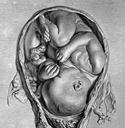J. Budziszewski,
On the Meaning of Sex
(Wilmington, DE: ISI Books, 2014).
In his book, On the Meaning of Sex, J. Budziszewski offers an adept philosophical portrait of human sexuality that will prove worthwhile for a wide range of readers, from teenagers to seasoned professors. Written with a style and wit reminiscent of the defenses of Christianity authored by C. S. Lewis and G. K. Chesterton, Budziszewski’s defense of sexuality’s inherent intelligibility is both timely and profound. The text might be fittingly approached as a germane (albeit less epochal) accompaniment to St. John Paul II’s Theology of the Body: while the TOB is a commentary on the theological anthropology of Humanae Vitae, On the Meaning of Sex is a commentary on its philosophical anthropology. The former approaches the encyclical from the perspective of revelation, the latter from the perspective of philosophy. The theses of the two texts converge, of course, both because John Paul’s theological anthropology draws amply upon philosophy, and because Budziszewski’s philosophy is practiced in the light of divine revelation. The differences of approach are nevertheless helpful, and each profitably illuminates the other.
Budziszewski’s philosophical assessment is firmly rooted in the natural law tradition. The main stream of this tradition seeks to discover the law inscribed in man’s heart from the moment of Creation (see Romans 2:15), by which he can understand what must be done and what must be avoided (see Veritatis Splendor, §12). Happily, the author’s application of this tradition’s principles bears noticeable similarities with the benchmark teachings of Veritatis Splendor on natural law. On the one hand, Budziszewski sidesteps the reduction of natural law to merely biological norms (21). On the other, he offers a ringing defense of the correspondence of freedom and nature (8) and the non-opposition of person and nature: “natural function and personal meaning are not alien to each other” (22). Furthermore, the very structure of the book manifests the intrinsic reference of natural law beyond itself to its source, thereby reflecting the encyclical’s teaching that natural law is the rational creature’s participation in the eternal law (see VS, §§43-44). It should be noted nevertheless that while Budziszewski’s text does contain arguments about natural law, the reader who wishes to grapple with rigorous assessments and explanations of the classical positions of natural law on sexuality would do better looking to more scholarly texts. Budziszewski’s work often presupposes or omits such assessments.
On the Meaning of Sex attempts to stir up a kind of ‘anamnesis,’ or remembering, of the law written upon the human heart with regard to the most important and most controversial aspects of human sexuality. Budziszewski’s various excurses into the matter are spent seeking the form of the nature of human sexuality, in the hope of reawakening or uncovering the oft-veiled knowledge that each of us has always possessed. It is the conviction of the author that only this balm of understanding will heal the hearts of those wounded by our forlorn culture. In order to accomplish this, Budziszewski climbs a “ladder of misunderstandings” (136) throughout his seven chapters, taking the reader on a pursuit of the true meaning and beauty of sexuality. While the first and last chapters provide a kind of introduction and conclusion respectively, the five chapters in between concern the meaning of the sexual powers, sexual differences, sexual love, sexual beauty, and sexual purity. The author’s particular rationale for the selection of these obviously important topics is that, amongst the misunderstandings of our age regarding sex, these topics contain “the biggest of those topsy-turvy things” that presently obstruct the understanding of sexuality. The recovery of the true meaning of these topics is the goal of each chapter. The arrival point of the study is marked by the concluding chapter, in which Budziszewski makes clear at last that “the supernatural purpose of mortal love…is to awaken in us the longing for that greater love which alone can give us all that we long for” (142).
A brief overview of the book’s chapters will provide a concrete sense of how Budziszewski attempts to recover the philosophy of the body and thereby awaken the reader to the true knowledge of human sexuality. From the very outset of the first chapter, he cuts to the heart of the matter by calling into question the prevailing cultural conviction that sex does not necessarily have meaning in itself, aside from the investment of meaning provided by the person. For the author, it seems that this conviction – as often presupposed as it is left unexpressed – is the root of our misunderstandings, and perhaps the origin of several others addressed later in the text. Budziszewski wishes to argue that sex does have inherent meaning, and that the discovery of this meaning is the beginning of human freedom and flourishing. Chapter Two begins to address the content of sex’s inherent meaning when it argues – in lockstep with Humanae Vitae – that “the natural meanings and purposes of the sexual powers” are procreation and union (24). For Budziszewski these meanings are not arbitrarily joined; rather, “union…characterizes the distinctly human mode of procreation” (25), and “the procreative and unitive meanings of sexuality…cannot be severed without distorting or diminishing them both” (33).
Attempting to recover the meaning of sexual differences, Chapter Three mounts a compelling argument for locating the fundamental difference between men and women in their potentialities for fatherhood and motherhood respectively (54-60). On Budziszewski’s reading, it is this specific difference that makes sense out of all the other differing characteristics of men and women. Chapter Four, on the meaning of sexual love, asserts that marriage is the most nourishing climate for love – especially romantic, sexual love – and that “vows are love’s native language” (68). The author proceeds to offer a helpful ‘map’ of love’s aspects, which plots out an account of the appropriate roles played by the emotions, on the one hand, and the will, on the other, within the love between a man and a woman. Considering the meaning of sexual beauty, Chapter Five attempts to recover a rich sense of physical, sexual beauty by way of redeeming the term ‘sexiness’ and purging it of its “dehumanizing” intonations. Budziszewski argues that true, “humanized sexiness” is “an outward sign of the inward reality of the beauty of womanliness itself…. [T]he qualities that make her sexually beautiful simply are those that make her a nice person to marry, make love, and have children with” (101, 102).
Striving to steer the reader away from a wholly negative conception of purity – i.e., simply not engaging in sexual acts – he suggests in Chapter Six that purity is the positive precondition to “the goods of beauty and integrity that impurity undermines and sullies” (111). Accordingly, purity is “a complex virtue” with inherent “component virtues” (119), three of which the author highlights: decorum, modesty, and temperance. The closing chapter on ‘transcendence’ gathers up the many prior allusions to the transcendent throughout the text, and does a fine job articulating the non-competitive relationship between divine and human love: “human love means so much, because divine love means still more” (139). Importantly, Budziszewski argues that divine love is so important not simply because human love is imperfect, but also because – even in its success – it remains insufficient. He writes, “as candle lights candle, [the lovers’] desire for each other kindles a desire for the Love of which their love is but a reflection. For [this] second part of their double-longing, the fulfillment is neither in each other nor in any created thing” (144).
While Budziszewski’s book is very successful in guiding the reader through these weighty topics, one criticism of the author’s approach may nevertheless be worth mentioning. In the first chapter, the author states quite perspicaciously that the ‘inescapable relevancy’ of divine grace will necessitate that allusions to God will accompany his writing, even though his overall argument “will sustain itself in reference to human realities that anyone might be able to know” (11). At certain points in the text, however, the author seemed almost apologetic for the presence of these allusions. The criticism, then, is simply that the author does not follow his original intuition more consistently, as the uncertain treatment of such allusions seemed to draw more attention to them than necessary; such attention may result in the distraction of the reader from the otherwise fine content of the argument at hand.
On the Meaning of Sex is an exercise in the art of anamnesis, and a depiction of the Creator’s beautiful plan for human sexuality. Budziszewski’s search for the truth of sexuality flusters the most commonplace of our culture’s dubious convictions, calling us once again to recognize “the imprint on us of divine light” (VS §42, quoting St. Thomas Aquinas). In its attempt to set aright ‘the topsy-turvy things,’ this work helps us to remember something that we have never fully forgotten – a truth engraved more deeply upon our hearts than the pain and sadness etched by the errors so common in our age.
Matthew Kuhner is a Ph.D student in theology at Ave Maria University and his wife Michelle is the office manager at a local Montessori school. They both received their M.T.S. degrees from the Pontifical John Paul II Institute in Washington, D.C.
Michelle Kuhner holds a Masters in Theological Studies from the Pontifical John Paul II Institute in Washington D.C.
Matthew Kuhner is Academic Dean and Assistant Professor of Systematic Theology at Saint Bernard’s School of Theology and Ministry in Rochester, NY.



